In my opinion, Rome is the most enchanting city in Europe. With its architecture, art, and immense historical heritage that has shaped human history since ancient times, Rome gives you the feeling of traveling back in time. Exploring Rome is like walking through an open-air museum, with a different story at every corner. In my guide, I will share both the must-see spots and the hidden, enchanting corners of the city. Finally, I will share a 4-day ready to travel itinerary.
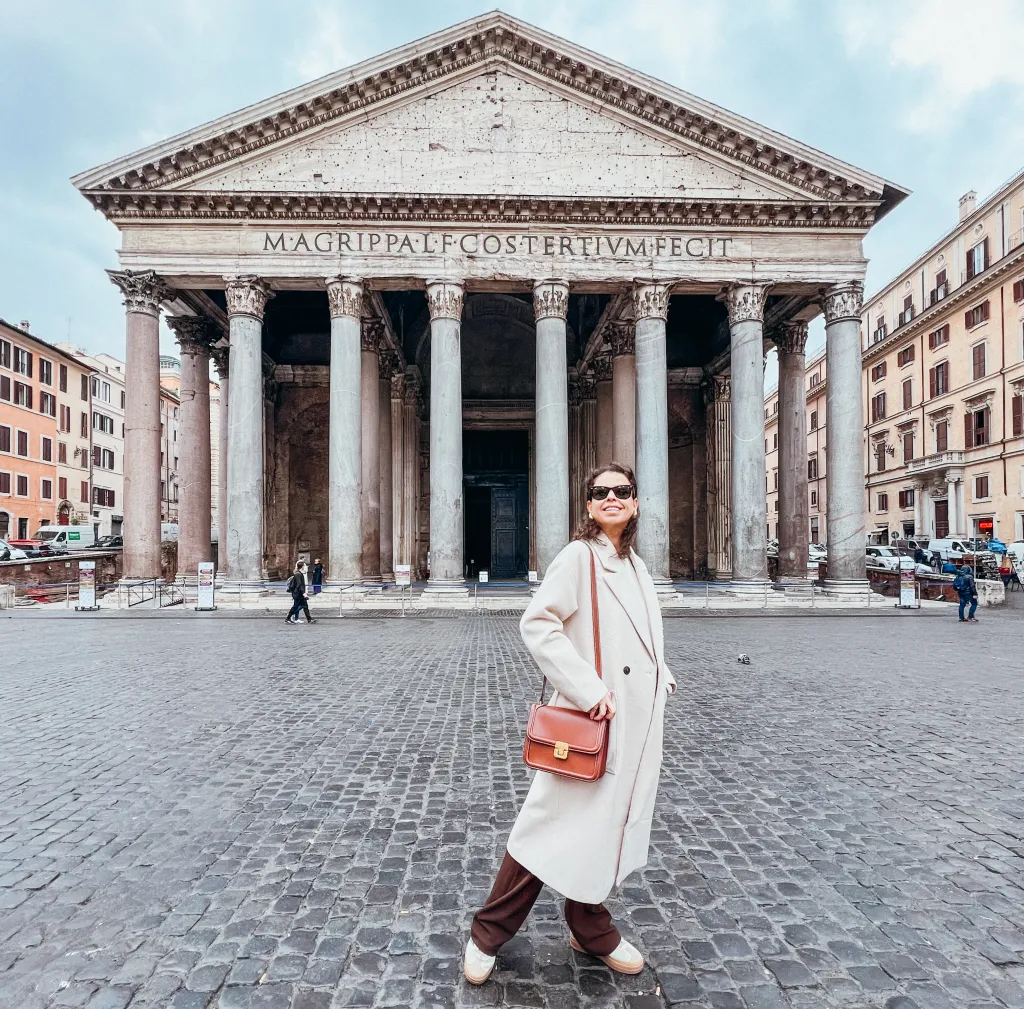
Things to do in Rome
First, I’ll share the main must-see sights in Rome, and then I’ll share some lesser-known sights that are worth seeing.
Main Tourist Attractions in Rome
Pantheon: Located in the heart of Rome, it is considered one of the best preserved Ancient Roman buildings in the world. The Pantheon’s dome is one of the largest concrete domes of all time and there is a space in the center that opens to the sky. Entrance used to be free, but as of 2024, there is a €5 entrance fee. Keep in mind that the first Sunday of every month is free.
Chiesa di Sant’Ignazio di Loyola: Dedicated to Ignatius of Loyola, the church was completed in 1626. It is famous for its spectacular ceiling frescoes by Andrea Pozzo, which create a three-dimensional illusion as if there were a dome on the ceiling. The place became famous on social media with a mirror placed on the floor that allows you to take a selfie with the magnificent work on the ceiling. Now they have turned this into a business, the mirror is normally foggy, but when you throw 1€ into it, it opens. There is also an incredible queue, try to go early in the morning.

Trevi Fountain: Rome’s most famous fountain and one of the most magnificent examples of the Baroque era. There is a belief that throwing a coin into the Trevi Fountain guarantees a return to Rome one day, and some people make a general wish. You have to be there at the crack of dawn to catch it empty, otherwise it is always very crowded. On Monday and Friday mornings it is empty again because they are cleaning money, but of course you can’t go near it. They collect around €1.5 million a year from here. By the way, I recommend you to see it illuminated in the evening.
Spanish Steps: The most iconic stairs of Rome, the Spanish Steps are located in Piazza di Spagna. They are decorated with flowers in the spring and make for really spectacular photos. If you go up to the Trinita dei Monti church at the top of the stairs, you can enjoy a panoramic view of the city. In the past, we used to buy pizza or pasta and sit on these stairs to eat it. Now it is forbidden, there is a fine. Everyone sits for a short time to take photos, but I think they interfere with sitting for a long time.

Villa Borghese & Galleria Borghese: Villa Borghese, one of the largest parks in Rome, is an ideal location for those who want to escape the busy pace of the city and get in touch with nature. Galleria Borghese, located in the park, serves as an art gallery that houses the works of masters such as Bernini, Caravaggio and Titian. Entrance is 13€.
Terrazza del Pincio: Located above Piazza del Popolo, this terrace has one of the most impressive views of Rome. Be sure to go here at sunset, it’s spectacular.
Colosseum: One of the most iconic landmarks of ancient Rome, the Colosseum is a huge amphitheater where gladiator fights and other spectacles were held. This is one of the new 7 wonders of the world. Although the Colosseum has been subjected to various natural disasters over time, it still retains its fascinating beauty and majesty. Admission is €18, free on the first Sunday of every month.
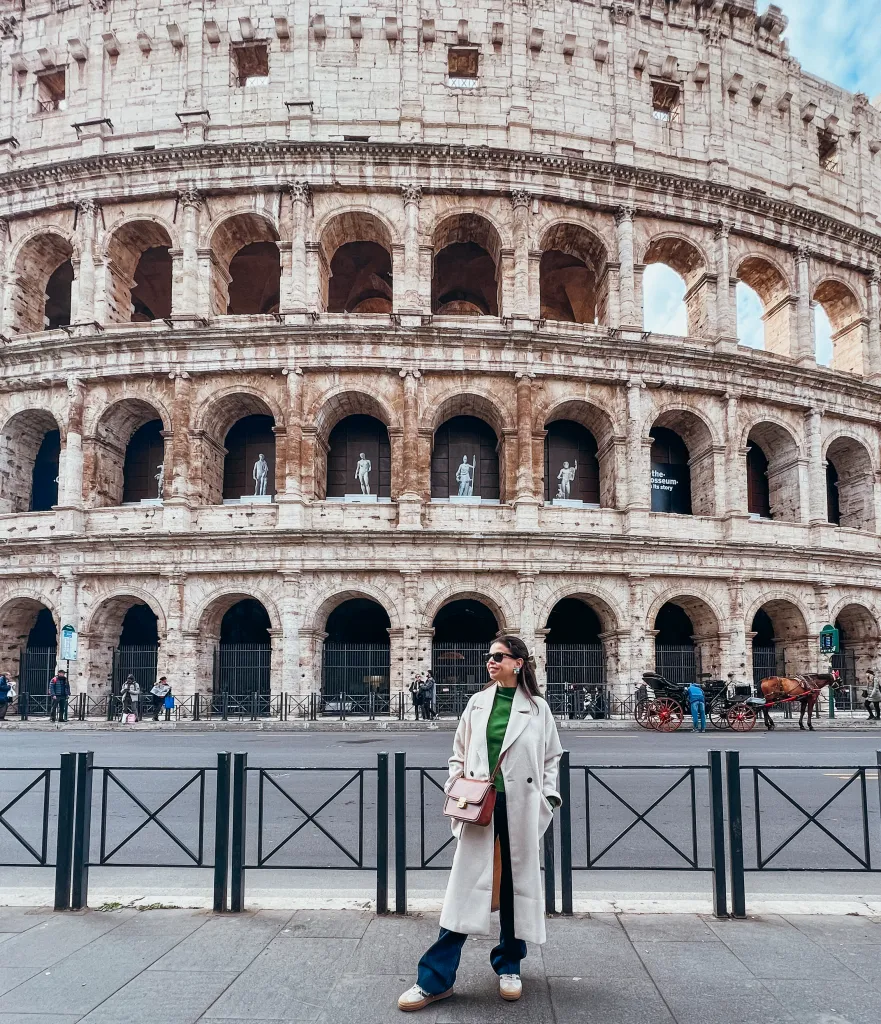
Roman Forum & Palatine Hill: This was the heart of Ancient Rome’s political, commercial and religious life. It is now an open-air museum with important buildings and ruins. The Palatine Hill, located right next to it, is known as the place where the city of Rome was founded. Colosseum entrance ticket allows you to visit these places as well.
Campidoglio: Designed by Michelangelo, the Capitoline Hill is one of the seven most important hills of Rome. This area is now home to Rome’s Capitoline Museums, where ancient artworks and sculptures are on display.
Jewish Ghetto: The Jewish Quarter is one of Rome’s vibrant districts, where you can wander the streets and take photos or visit colorful boutiques and venues.

Bocca della Verita: Mouth of Truth is located in the courtyard of the Church of Santa Maria in Cosmedin. Legend has it that this marble mask is supposed to bite the hand of those who lie. In reality, behind the mask hides an executioner with a sword. It became famous worldwide thanks to the movie “Roman Holiday” starring Audrey Hepburn and Gregory Peck.
The river Tiber and the island of Tiber: It is very pleasant to walk along the Tiber River that runs through Rome. There is an old church and hospital on Tiber Island in the Tiber River.
Trastevere: Trastevere, one of the most popular neighborhoods of Rome, is famous for its narrow streets, colorful buildings and lively atmosphere. There are also many nice cafes, bars and restaurants in this neighborhood.
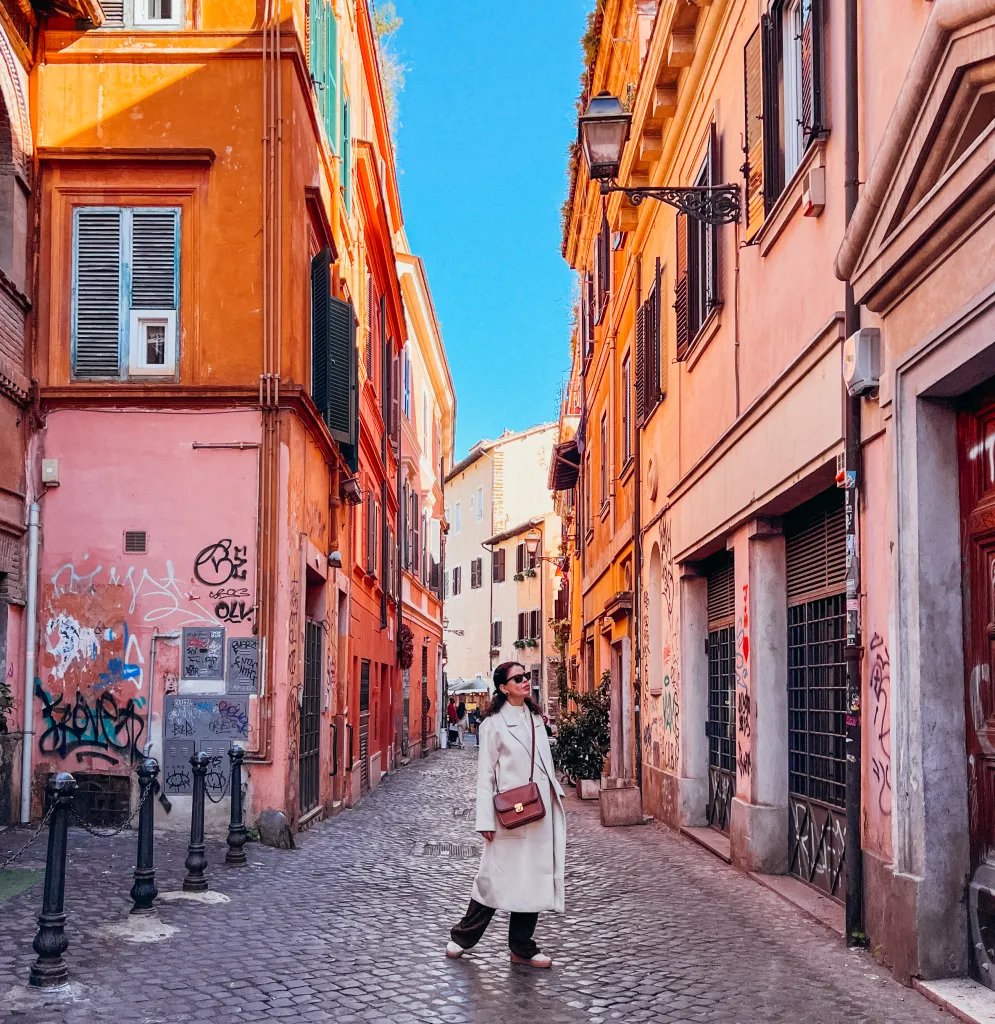
Vatican Museums: You might want to visit the Vatican, the smallest country in the world, where museums house one of the most important art collections in the world. It is a must-visit not only for art lovers but also for history and culture enthusiasts. I recommend you to buy your ticket online, because there are incredible ticket queues. Tickets are 20€ and there is a 5€ service fee if you buy online. Entrance is free on the last Sunday of every year.
Sistine Chapel: This is one of the most famous religious sites in the world with Michelangelo’s magnificent ceiling frescoes and the “Last Judgment” mural. Built by Pope Sixtus IV at the end of the 15th century, the chapel is also important because it is the place where the conclave, one of the most sacred rituals of the Catholic world, is held to elect the Pope, the king of the Vatican. Entrance included in the Vatican ticket.
St. Peter’s Basilica: The largest and most important church in the Christian world, built over the tomb of St. Peter. It is free to visit the inside of the basilica, but there is a fee to go up to the dome to see the famous Vatican view, 8€ for the stairs and 10€ for the elevator.
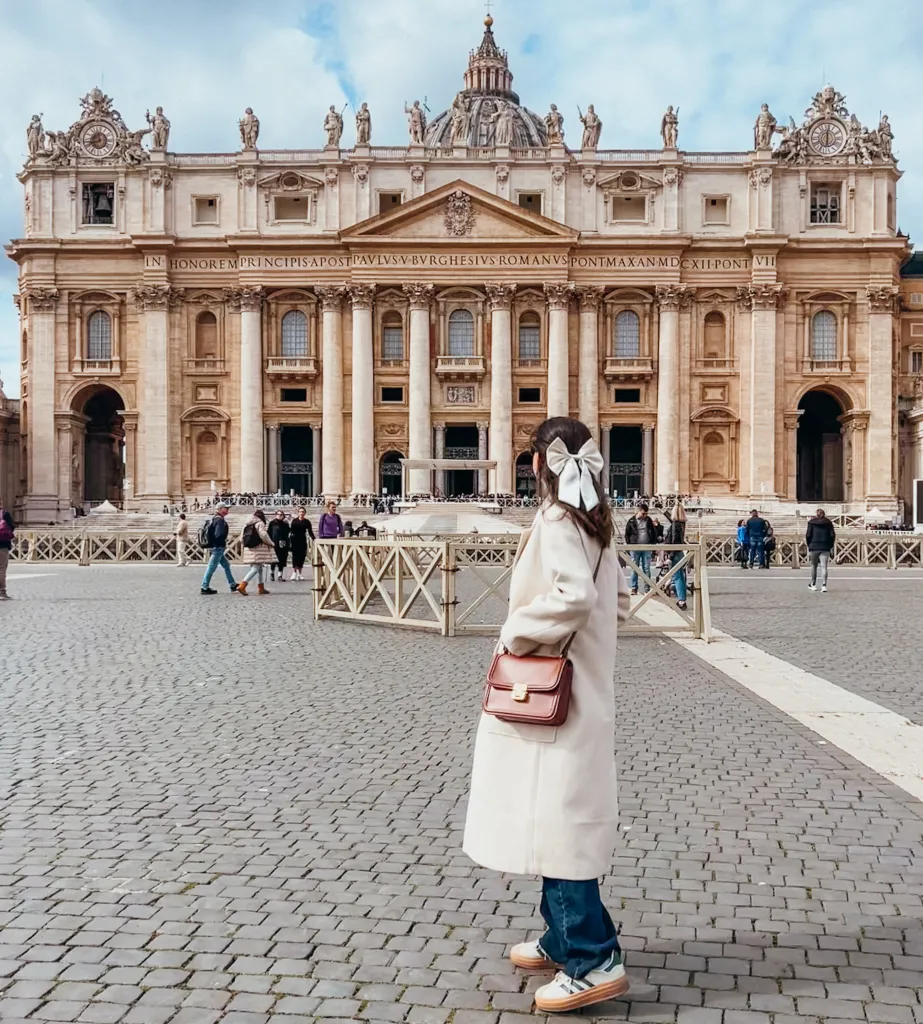
Castel Sant’Angelo Castle: Located on the banks of the Tiber River, Castel Sant’Angelo was built in 135 AD as the family mausoleum of the Roman Emperor Hadrian. You can watch the beautiful views of Rome from the terrace of the castle. Also, the museum inside the castle exhibits collections on military history. Entrance fee is 12€.
Campo de Fiori: The square, where a colorful market is set up during the day, becomes lively again in the evenings as bars, restaurants and cafes fill up. Campo de’ Fiori means “field of flowers” and is named after the flower fields found here in the 15th century.
Piazza Navona: I would say this is the most famous and most beautiful square in Rome, Bernini’s famous Fountain of the Four Rivers is located here. There are lots of cafes and restaurants, you can take a break here and buy paintings from the street artists in the square.
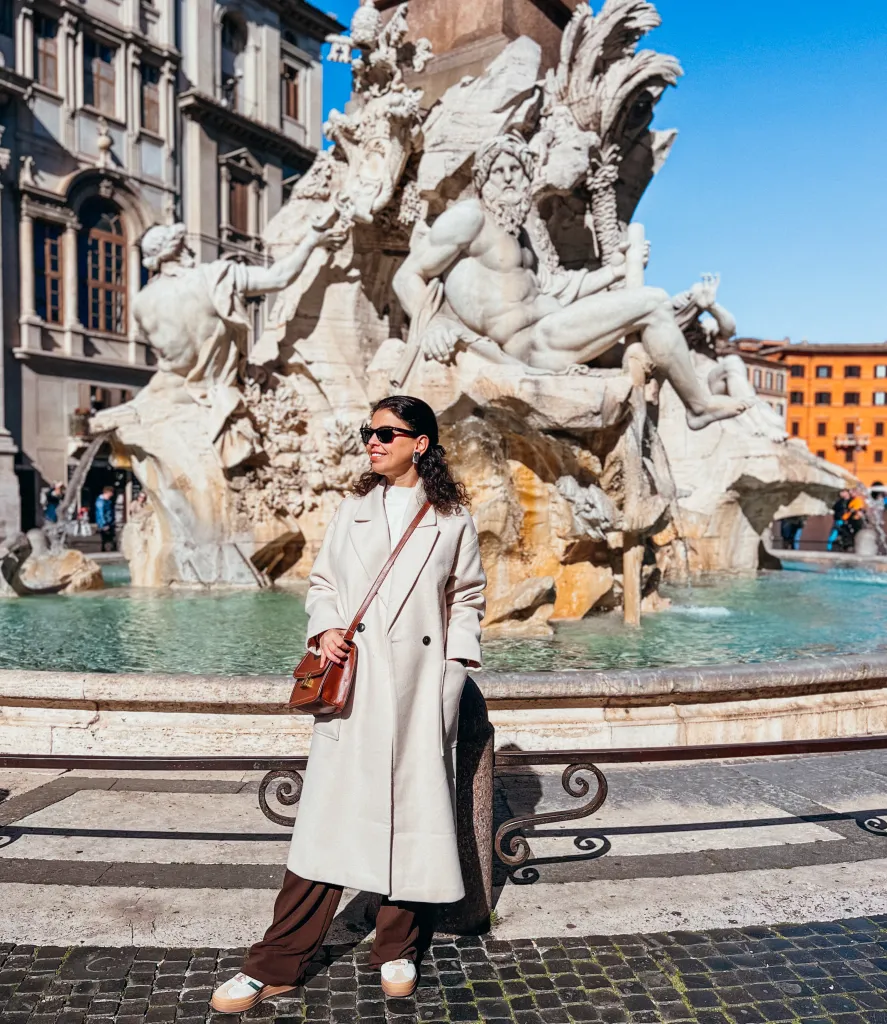
Unusual Things to do in Rome to Avoid the Crowds
Chiesa del Gesu: It is known as the mother church of the Jesuit order and houses the tomb of its founder, St. Ignatius Loyola. The inside is really fascinating and there is a mirror for taking selfies, there is no line and there is no charge, so keep that in mind.
Chiesa Santa Maria dell’Orto: One of the most fascinating churches inside and there was no one there when I visited, they have put a cute selfie mirror here, again free of charge.
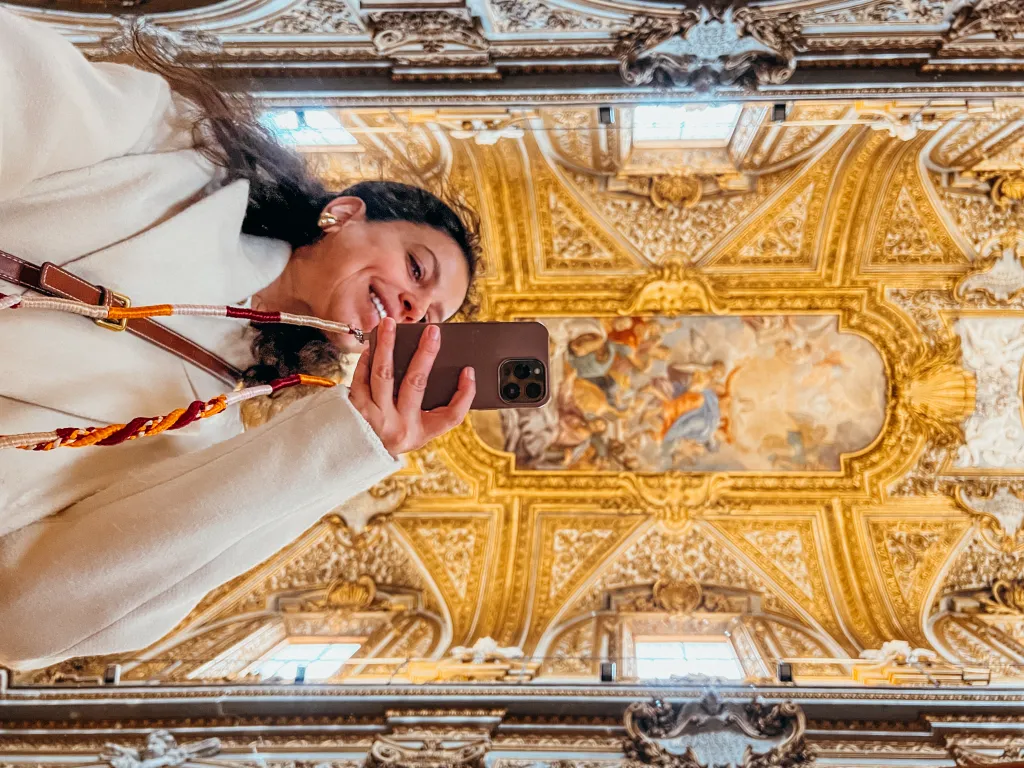
Galleria Sciarra: A wonderful courtyard with paintings on the walls, open during weekday opening hours.
Galleria Doria Pamphilj: A small palace with wonderful halls displaying the Pamphilj family collection.
Galleria Colonna Museo e Pinacoteca: This is a small but fascinating palace with the Colonna family art collection.
Camerette di Sant’Ignazio di Loyola: A wonderful corridor decorated with frescoes by Andrea Pozzo.
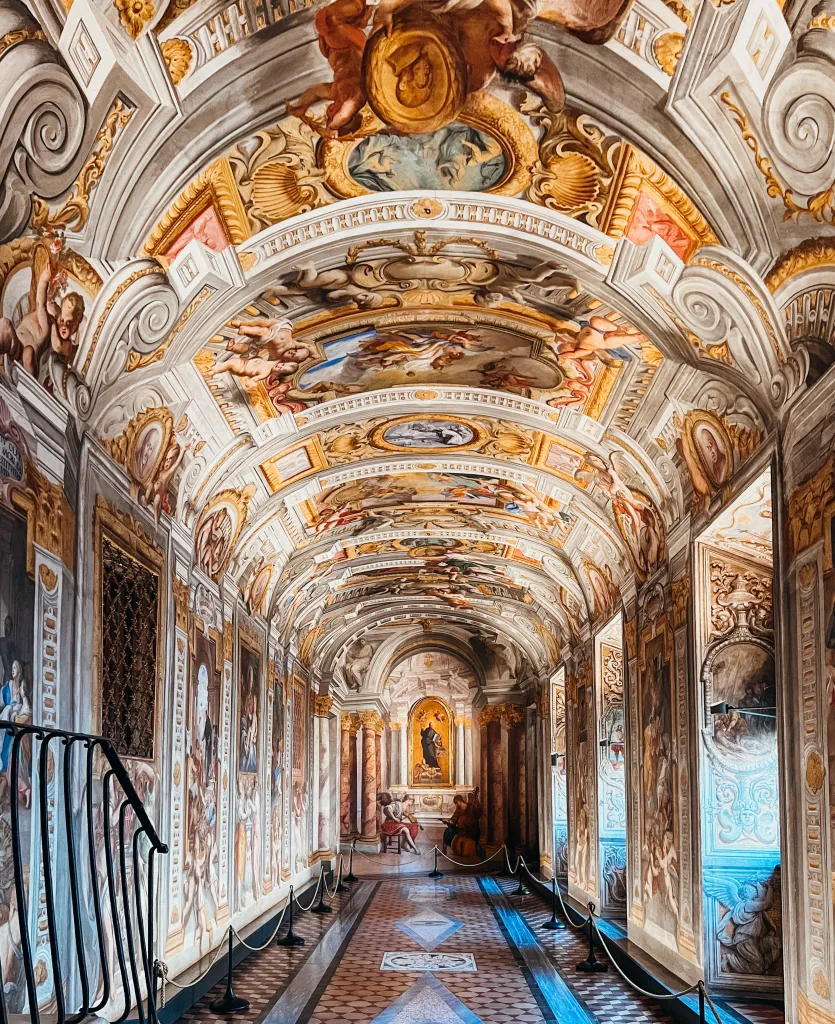
Ostiense: This neighborhood stands out with its walls covered with street art and newly opened venues.
Quartiere Coppede: A neighborhood that stands out with its architecture that mixes elements of Art Nouveau, Greek, Gothic, Baroque and Medieval art.
Monti: Monti is one of the oldest neighborhoods in Rome. It has a bohemian atmosphere with narrow streets, boutique shops, vintage stores and art galleries. I can say it is one of my favorite neighborhoods after Trastevere.
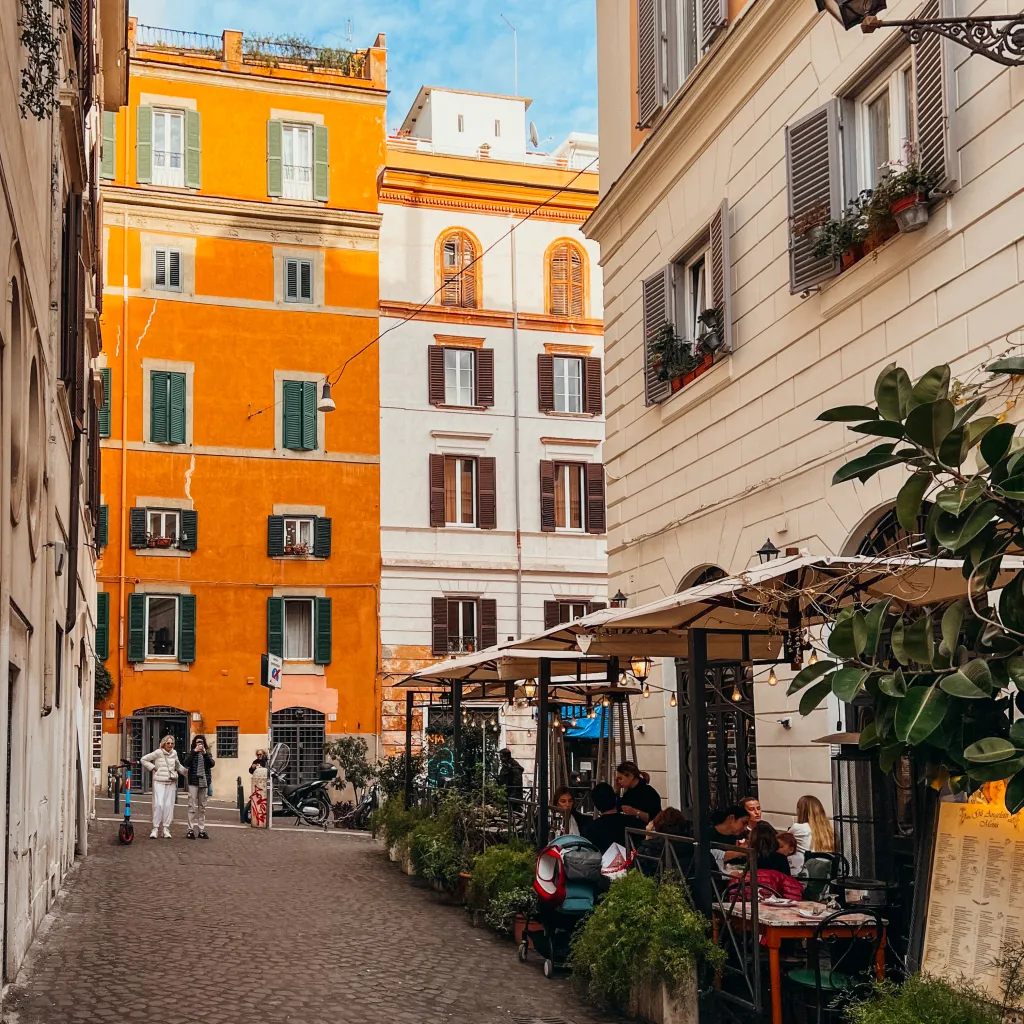
Testaccio: This neighborhood is home to local restaurants and taverns serving the best of Roman cuisine. It’s also a popular area for nightlife.
Knights of Malta Keyhole: Located on Aventine Hill, this is a property belonging to the Order of the Knights of Malta. When you look through the keyhole in the door, you can see the dome of St. Peter’s Basilica in a frame, a very photogenic view.
Pyramid of Cestius: This pyramid-shaped structure was built in 12 BC as a tomb for Gaius Cestius and reflects the influence of Egyptian culture on Roman society after the annexation of Egypt to the Roman Empire. It is located on the border of the Testaccio and Ostiense neighborhoods.
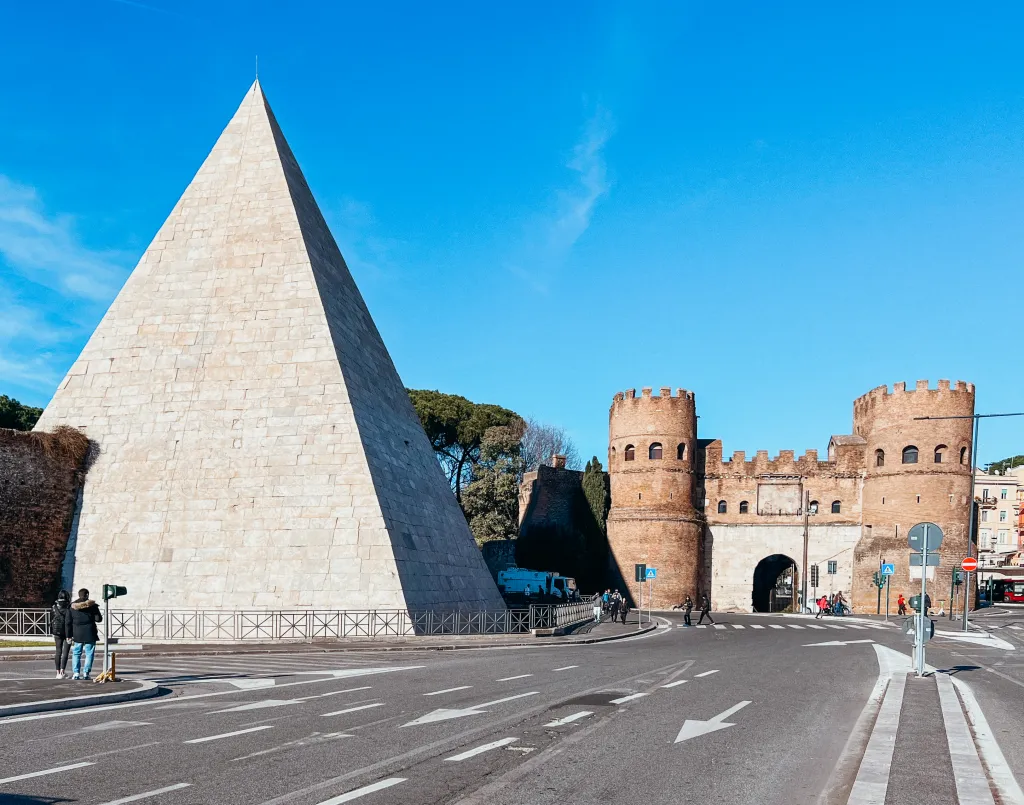
4 Days in Rome Itinerary
For those who are going to Rome for the first time, I have prepared a day-by-day itinerary as follows. I gathered the places that are close to each other on the same day. Especially the first 3 days were very full programs. If you want to travel more slowly, you can of course change the routes according to the number of days and the places you care more about.
Rome Trip Itinerary Day 1
Pantheon, Chiesa di Sant’Ignazio di Loyola, Doria Pamphili Gallery veya Galleria Colonna, Galleria Sciarra, Trevi Fountain, Spanish Steps, Via del Corso, Villa Borghese & Galleria Borghese, Quartiere Coppede, Terrazza del Pincio
Rome Trip Itinerary Day 2
Colosseum, Roman Forum & Palatine Hill, Monti, Campidoglio, Chiesa del Gesu, Camerette di Sant’Ignazio di Loyola, Jewish Ghetto, Bocca della Verita, Tiber nehri, Trastevere, Chiesa Santa Maria dell’Orto
Rome Trip Itinerary Day 3
Vatikan Müzeleri, Sistine Şapeli, St. Peter’s Bazalikası, Castel Sant’Angelo Kalesi, Piazza Navona, Campo de Fiori
Rome Trip Itinerary Day 4
Ostiense, Cestius Piramidi, Testaccio, Knights of Malta Keyhole
I hope my article on Things to Do in Rome will be useful for you and you will make a nice Rome trip. If there are other things you want to ask, please leave it as a comment. If you have any extra suggestions, I would also welcome them in the comments.
Don’t forget to follow me for more photos and to be informed about my future posts!
Instagram: lifetime.journey
Tiktok: ihdcnwbcmw.com
Facebook: ihdcnwbcmw.com
Discover more from LIFETIME JOURNEY
Subscribe to get the latest posts sent to your email.